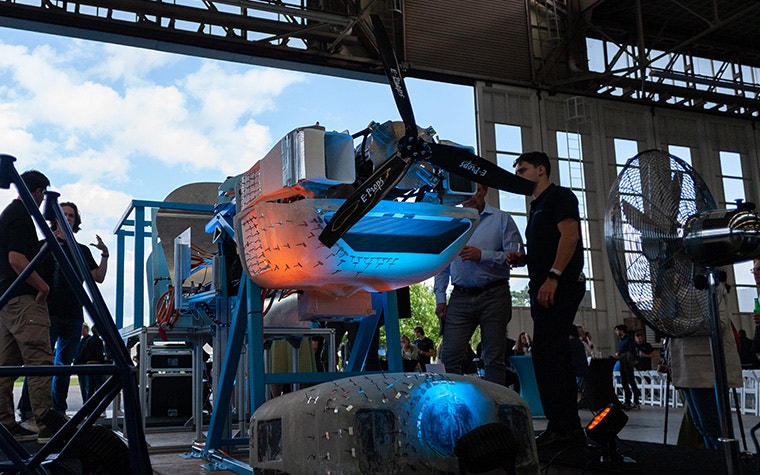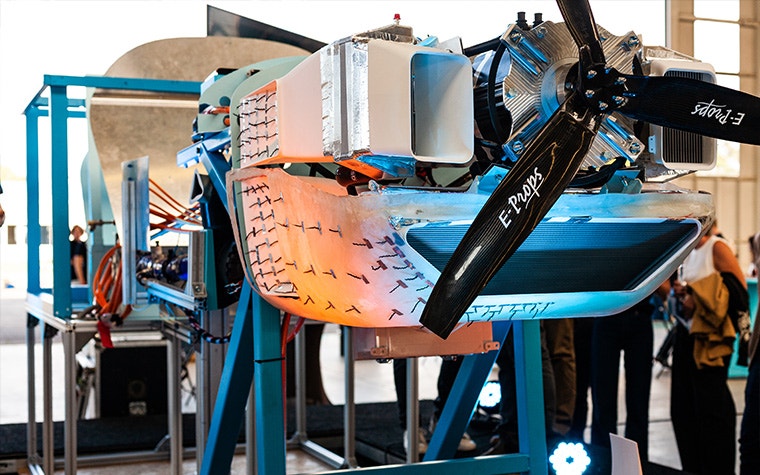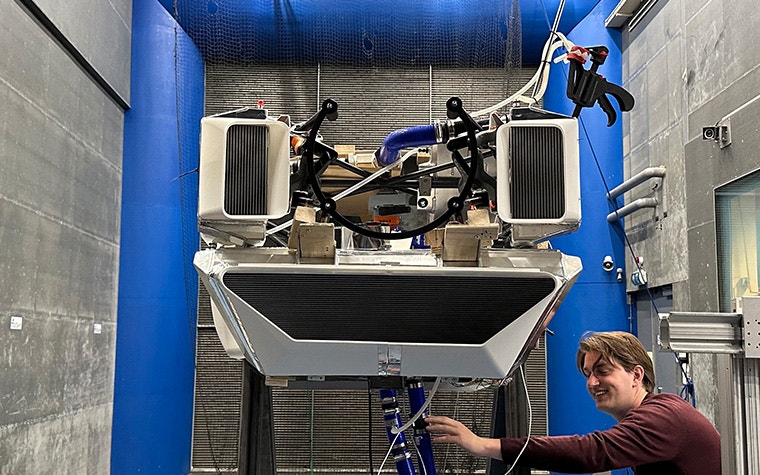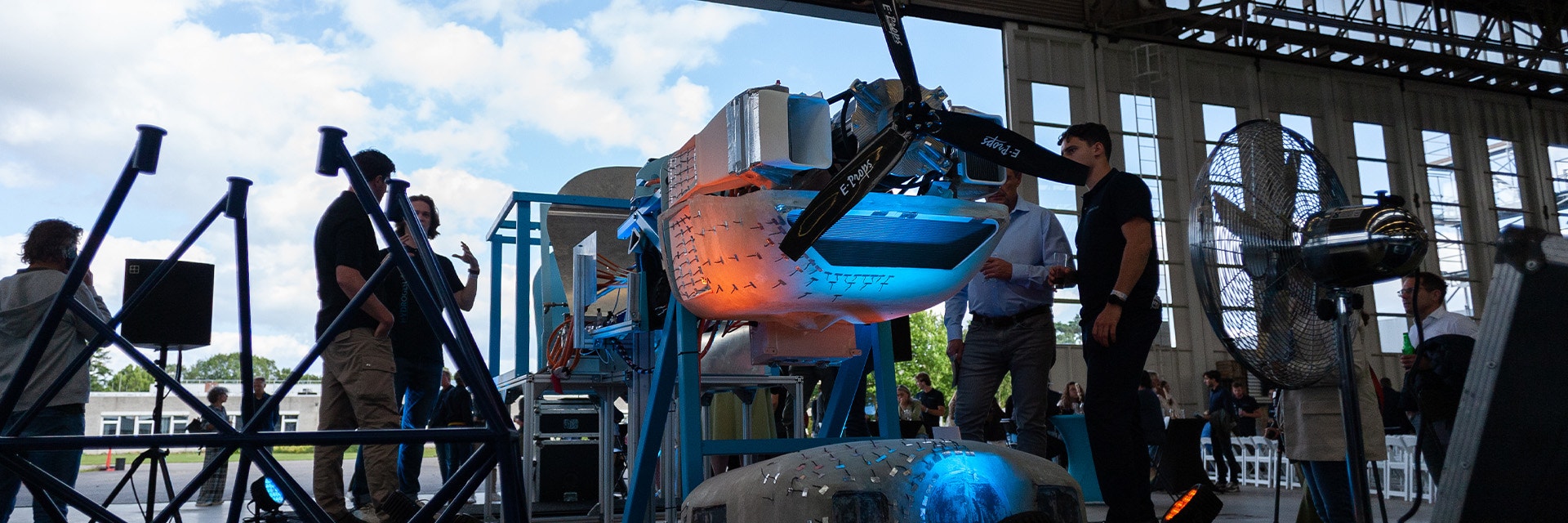CASE STUDY
Additive Manufacturing Supports AeroDelft’s Vision for Sustainable Aviation

AeroDelft’s Project Phoenix has one ambitious goal: to prove that liquid hydrogen can power an aircraft as a sustainable alternative to fossil fuels. To achieve this, the student team is retrofitting a Sling 4 kit aircraft with a hydrogen fuel cell electric propulsion system. This forward-thinking concept comes with a variety of technical challenges, from precise, complex structures to thermal management requirements that additive manufacturing is helping to solve.
The challenge
Designing cooling components: complex shapes, tight deadlines
From the outside, AeroDelft’s Sling 4 aircraft looks largely the same as any other. Eagle-eyed aviation fans might notice the minor changes to the engine cowl, a tweak to the shape of the nose, and a few strategically placed holes for emergency ventilation. Its certified wings and airframe remain unchanged; the exciting stuff takes place in the engine room, where new 3D-printed components are helping the project take flight.
“We need to keep the temperature range of the hydrogen fuel cell stack relatively low compared to a combustion engine, no higher than 80–90°C,” explains Max Wilbrink, the team’s Thermal Management Engineer. “We need a high mass flow of air through the radiators to maintain this temperature, which requires us to greatly scale up the radiators — that’s why the nose is now a little bigger.”
Fitting these new, larger radiators into the existing airframe made production challenging. Key parts like the ducts that connect both inlets and outlets to the radiator had complex shapes and needed to be highly precise to guide the air as intended. Performance, funding, and time (as a student team at TU Delft, members come and go each year) were also critical factors.
“Because this is a single-use case, a demonstrator, we don’t need any tools or molds, and we want to be able to adapt the design quickly,” says Nils Platenburg, Chief of Gaseous Hydrogen Propulsion. “Combined with the very specific nature of these components, additive manufacturing was the best way to go for these ducts.”


The solution
Additive manufacturing with Materialise: design freedom, small series suitability, and quality assurance
AeroDelft’s reasoning for choosing additive manufacturing is sound — design freedom, flexibility, and suitability for small series production are key drivers for adoption in the aerospace industry. Drawn to Materialise’s experience as a certified manufacturer for aerospace and 3D printing pedigree, particularly when producing parts with characteristics such as flame retardancy, the AeroDelft team reached out with the earliest version of their design. With Materialise's Aerospace Competence Center neighbouring the TU Delft campus, collaboration couldn't have been easier.
“When we met with Materialise, we discussed how to make our design printable,” recalls Max. “The team gave us advice on the maximum size, where to split the parts, and how to connect the separate pieces — a great idea to make pins on each part so they aligned automatically.”
The student team also quickly settled on selective laser sintering and PA-FR. Having printed test pieces on a domestic FDM printer, they knew they wanted a smoother surface finish for the final ducts — a characteristic of SLS prints. And while the ducts did not require EASA certification, their connection to the heat exchangers called for a material that could withstand heat and hold its shape.
“The main reason we wanted PA-FR for these parts is the flammability aspect and its use in aerospace applications, and we know that Materialise is really specialized in this,” Max continues. “We made test parts ourselves, but for the real flying parts, we wanted that quality assurance that Materialise offers.”
Wind tunnel testing
Design flexibility is a well-known advantage of working with additive manufacturing, especially when it comes to testing — the AeroDelft team could make small adjustments to the design without costly changes to molds or forms that traditional techniques would require.
They began by testing the first iteration in a wind tunnel. The parts performed well, and the tests provided valuable data that helped the team identify areas for improvement before updating the design in a later iteration and integrating the parts into the aircraft. It’s a process that they’d like to repeat moving forward.
“3D printing is a great option throughout the entire product development phase, especially for testing,” says Max. “Because of their size, we print the ducts in separate pieces, and one part sticks out of an outlet in the cowling. We might want to print two or three different options for that particular piece, test them all in the wind tunnel, and determine the optimal design.”


The result
A prototype takes shape: paving the way for hydrogen flight
Having settled on the latest design, successfully conducted a hot-fire test of the engine, and scheduled a final round of wind tunnel testing, the AeroDelft team is gearing up for two taxiing and flight tests between the end of 2025 and 2026.
“Our first test flight will use gaseous hydrogen, and we estimate that it will last around 30 minutes,” says Nils. “It will be very small, but we will already learn a lot about the rest of the electrical systems and how everything is controlled. Our main goal is to operate using liquid hydrogen, which is a little more complicated, as we need to tweak both the temperatures and pressures. In that second test, we’re aiming for a two-hour flight.”
Future applications
As the team becomes more accustomed to designing for additive manufacturing, Max, Nils, and their fellow students continue to think about how they might take advantage of the technology in the future. The team has considered mounting structures for parts that sit in awkward positions and vacuum jackets to help keep the liquid hydrogen cool, for example.
More important, however, is their goal for the project at large: helping to promote a more sustainable future in aviation. Additive manufacturing is a means to an end in a very important cause.
“Our goal is to prove and promote liquid hydrogen as an alternative to conventional fuels in aviation,” concludes Nils. “It’s a very relevant topic as aviation’s carbon footprint is growing and growing — about 2.5% [of global emissions]. Only about 10% of the global population flies, so it makes a big impact. We want to cut it down and contribute to a greener future. That’s what Project Phoenix is all about.”
Share on:
This case study in a few words
Aerospace
- Selective laser sintering
- PA-FR
- Manufacturing services
- Design freedom
- Small series manufacturing
- Rapid iterations
- Heat resistant materials
